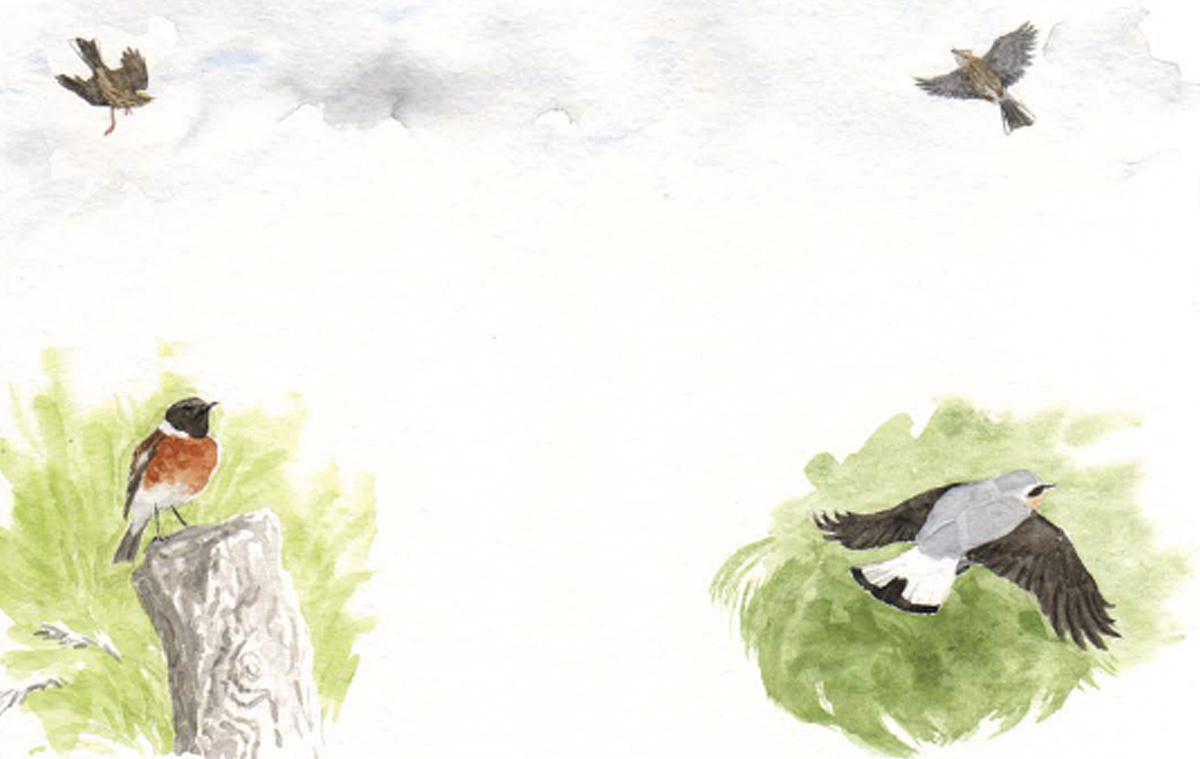Feathers In The Dunes

The dominant feathered inhabitants of the dunes are the meadow pipit and the skylark. Smallish, streaky-brown birds, both are superficially alike and indeed are often mistaken one for the other. In summer, however, when the males are endlessly singing they can be easily distinguished. The meadow pipit sings its exuberant song as it descends like a paper aeroplane; the skylark sings as it ascends vertically into the sky. Other familiar insect-eating birds of the dunes are the stonechat and the wheatear. Though both like to perch prominently, on a rock or a bush, they are quite different in appearance.
The stonechat looks like a robin with a black head and white spots on the neck, wings and tail. The wheatear is larger with a black-tipped white tail. Unlike the stonechat, an all-year-round resident, the wheatear is a summer visitor from Africa. So too is the cuckoo which in the open dune country seeks out the nest of a pipit in which to lay its egg. Golfers are familiar with the swallow, another summer visitor, which hunt for insects over the greens often breathtakingly close to the ground. Less familiar is the little brown relative of the swallow – the sand martin. This summer visitor nests in holes in the sand banks near the maintenance depot. The bird of prey to look out for is the kestrel, often seen hovering as though suspended from an invisible thread. The raptor nests in the ruins of Dough Castle on the Castle Course.
